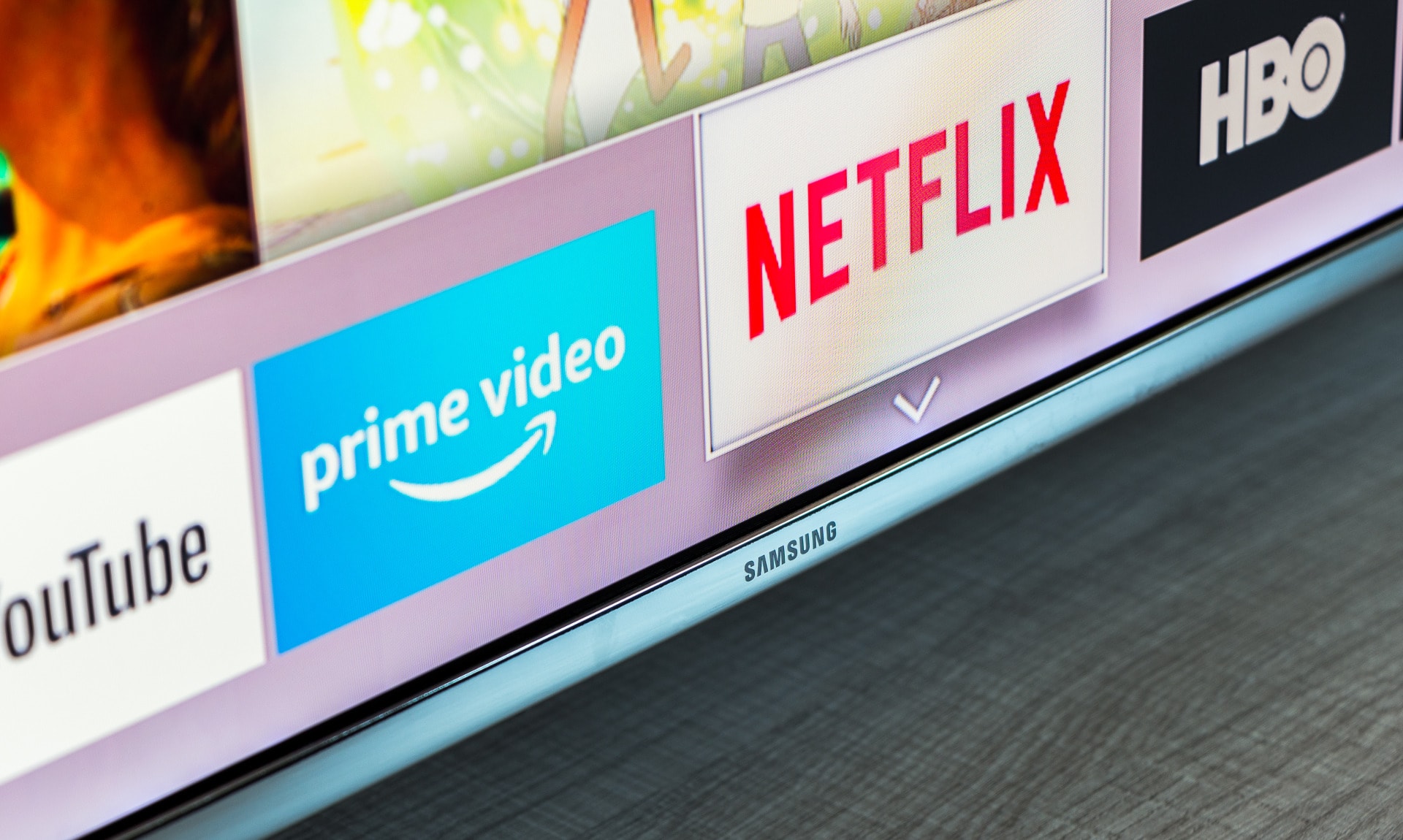
OTT Advertising: Guide to Over-The-Top Ads (2024)
Over-the-top (OTT) advertising is quickly becoming a cornerstone of digital marketing strategies as it allows brands to reach viewers directly through internet-streamed content. As traditional TV viewership declines, OTT platforms and ads offer a lucrative channel for marketers looking to tap into a more engaged and targeted audience.
This guide explores the intricacies of OTT advertising and how it’s reshaping the way companies advertise in 2024.
What is OTT Advertising?
OTT advertising refers to the placement of ads within content delivered over the internet, bypassing traditional media platforms like cable or satellite TV.
This form of advertising is integrated into streaming video services and applications, allowing marketers to reach a diverse audience across various devices, including smart TVs, computers, and mobile devices. By leveraging advanced targeting and analytics, OTT advertising delivers personalized and highly effective ad experiences to consumers.
OTT vs Connected TV (CTV)
While OTT (over-the-top) refers broadly to any video content streamed over the internet, regardless of device, Connected TV (CTV) specifically denotes content streamed through internet-connected televisions.
Thus, all streaming TV advertising is a subset of OTT, but OTT also includes streaming on non-TV devices like smartphones, tablets, and computers.
- Learn more about OTT vs. CTV.
OTT vs Video on Demand (VOD)
To reiterate, over-the-top content encompasses a broad spectrum of video content streamed over the internet, including live broadcasts and pre-recorded shows, across various devices.
Video on Demand (VOD), on the other hand, specifically refers to pre-recorded content that viewers can watch at their leisure, regardless of the original broadcast time, and is just one component of the broader OTT landscape.
Benefits of OTT Advertising
OTT advertising offers several compelling benefits that enhance both reach and relevance in modern digital marketing campaigns.
1. Precise Audience Targeting
OTT platforms harness extensive data on viewer preferences and behavior, enabling advertisers to target their campaigns more precisely than traditional TV advertising allows. This targeting can be based on demographics, interests, viewing habits, and more, ensuring that ads are served to the most relevant audience.
2. Increased Engagement
Ads delivered via OTT are often unskippable and integrated seamlessly into content, leading to higher engagement rates compared to other digital advertising formats. Moreover, the on-demand nature of OTT content means that viewers are choosing to engage with the content, likely leading to more attentive viewing.
3. Measurable Analytics
OTT advertising platforms provide advertisers with detailed analytics that track the performance of their ads in real time. This performance marketing data includes metrics like view counts, engagement rates, and conversion tracking, allowing marketers to optimize their campaigns effectively and measure ROI with precision.
4. High-Quality Ad Environment
OTT ads are typically displayed within high-quality, professionally produced content, enhancing the viewer’s experience and associating the ad with premium content. This context can elevate brand perception and improve the overall impact of the advertisement.
5. Cross-Device Targeting
With consumers increasingly using multiple devices to access streaming content, over-the-top marketing allows brands to reach their audience across different platforms with accurate OTT attribution. Whether viewers are on mobile devices, tablets, or smart TVs, advertisers can ensure consistent messaging across all these touchpoints, enhancing brand recognition and campaign reach.
How Does OTT Advertising Work?
OTT advertising employs a finely-tuned, data-driven approach to reach viewers through digital streaming services, encompassing several key stages:
- Step 1 – Audience Selection: Advertisers pinpoint their ideal audience segments by analyzing extensive data on user demographics, viewing habits, and preferences.
- Step 2 – Creative Development: Tailored ads are crafted to resonate with the selected audience, emphasizing creativity to capture attention and convey the desired message effectively.
- Step 3 – Ad Placement: Strategic placement of ads is determined within the content, ensuring they appear during optimal viewing times or alongside relevant programming.
- Step 4 – Targeting and Delivery: Ads are delivered to targeted audiences using advanced algorithms that ensure the right ads reach the right viewers at the right time.
- Step 5 – Viewer Interaction: The platform tracks how viewers interact with ads, whether they watch through to completion, skip (if possible), or take further action.
- Step 6 – Measurement and Analysis: Detailed analytics are employed to measure the performance of ads, collecting data on viewer engagement, reach, and conversion rates.
- Step 7 – Optimization: Insights gained from data analysis are used to refine and optimize ongoing and future programmatic advertising campaigns, enhancing effectiveness and ROI.
Types of OTT Ads
OTT ads come in various formats, each designed to engage viewers differently and maximize the impact of marketing messages across streaming platforms.
- Pre-roll Ads: These are short advertisements that play before the start of a video, ensuring viewers see the ad before their selected content begins.
- Mid-roll Ads: Similar to linear TV commercials, mid-roll ads appear at specific intervals during video playback, designed to capture attention while minimizing disruption.
- Post-roll Ads: Ads that run after the video content has concluded, targeting viewers who have watched the entire program.
- Interstitial Ads: Full-screen ads that appear between episodes of a show or during breaks in a movie, often with interactive elements to engage viewers directly.
- Banner Ads: Less intrusive, these ads display as small banners or overlays on the screen during video playback, typically at the bottom or top, without stopping the video.
- Native Ads: Seamlessly integrated into the content, native ads mimic the appearance and style of the editorial flow, aiming to be less disruptive while still reaching the audience.
How Are OTT Audiences Targeted?
We’ve mentioned this briefly before, but let’s cover it in more detail. OTT platforms enable advertisers to target audiences with unprecedented precision, leveraging advanced data analytics to tailor ad delivery. The most common OTT targeting options are:
- Demographic Targeting: Ads are customized based on age, gender, income, education, and other demographic factors to reach specific groups.
- Geographic Targeting: Advertisers can specify the delivery of their ads to viewers in particular cities, regions, or countries, making campaigns locally relevant.
- Behavioral Targeting: Based on viewers’ past behavior, such as viewing habits, purchase history, and content preferences, ads are specifically aimed to align with their interests.
- Contextual Targeting: Ads are matched with content that shares a similar theme or subject, ensuring relevance to the viewer’s current viewing experience.
- Device Targeting: Tailored ads are delivered depending on the device being used, whether it’s a smart TV, mobile phone, tablet, or gaming console, optimizing format and design for the best user experience.
- Time-Based Targeting: Advertisers can choose specific times of day or days of the week for their ads to appear, targeting viewers when they are most likely to be watching.
- Psychographic Targeting: Targeting based on psychological attributes like values, beliefs, and lifestyles, ensuring ads resonate on a deeper emotional level with the audience.
Types of OTT Platforms
OTT platforms vary in their business models and audience access methods, catering to different viewer preferences and marketing needs.
Subscription-based Video on Demand (SVOD)
Platforms like Netflix, Hulu, and Amazon Prime Video operate on this model, where users pay a monthly fee to access unlimited content. This model prioritizes user experience, often without ads, providing a steady revenue stream through subscriber fees.
Advertising-based Video on Demand (AVOD)
Services such as YouTube and Hulu (limited ads version) offer free content supported by ads, where revenue is generated through commercial breaks within videos. This model allows users free access but with interruptions similar to traditional TV.
Transactional Video on Demand (TVOD)
Platforms like iTunes and Google Play allow users to pay for each piece of content they wish to watch or download. This model caters to customers looking for specific titles without committing to a subscription, offering immediate access to a wide range of movies and series.
Premium Video on Demand (PVOD)
This newer model, used by services like Disney+ Premier Access, allows subscribers to view new, big-ticket items for an additional fee atop their subscription. It’s particularly popular for releasing movies online simultaneously with or shortly after their theatrical debut, capitalizing on the demand for early access.
- Learn more about SVOD, AVOD, and TVOD.
OTT Metrics and Measurement
OTT measurement using various metrics and KPIs is essential for advertisers to gauge the effectiveness and reach of their campaigns, providing critical insights into viewer behavior and engagement. Here are some of the most commonly used marketing metrics:
- Impressions: Measures the total number of times an ad has been displayed, regardless of whether it was clicked or not.
- Reach: Indicates the number of unique viewers who have seen the ad, helping advertisers understand the spread of their message.
- View-Through Rate (VTR): This metric shows the percentage of viewers who watched the ad completely, providing insights into how engaging the ad is.
- Click-Through Rate (CTR): Measures the percentage of viewers who clicked on the ad after viewing it, which can indicate interest and the initial impact of the ad.
- Conversion Rate: Tracks how many viewers took a desired action, such as making a purchase or signing up for a newsletter, after viewing an ad.
- Cost Per Thousand Impressions (CPM): A common financial metric that represents the cost of 1,000 impressions of the ad.
- Engagement Rate: Assesses how viewers interact with the ad, including interactions like clicks, shares, and other social metrics.
- Completion Rate: The rate at which viewers watch an ad from start to finish, crucial for understanding overall ad effectiveness and viewer retention.
Types of OTT Devices
So, where are the ads shown? OTT devices span a range of technologies, enabling users to stream their favorite digital content directly over the internet to various types of hardware.
- Smart TVs: These televisions come with built-in internet connectivity and pre-installed streaming apps, allowing users to access OTT content directly.
- Streaming Media Players: Devices such as Roku, Amazon Fire TV, Apple TV, and Google Chromecast plug into traditional TVs, transforming them into smart streaming hubs.
- Gaming Consoles: Consoles like the PlayStation, Xbox, and Nintendo Switch support streaming media apps in addition to gaming, offering a versatile entertainment experience.
- Computers and Laptops: Through web browsers or dedicated apps, PCs and laptops can stream OTT content, providing a flexible option for viewing on larger screens.
- Smartphones and Tablets: Mobile devices offer the ultimate in portability for streaming OTT content, with dedicated apps for a myriad of streaming services.
- Set-Top Boxes: Often provided by cable or telecom companies, these boxes combine traditional TV services with internet-based streaming, offering a hybrid viewing experience.
OTT Marketing Best Practices
OTT marketing requires a strategic approach to maximize reach and engagement; here are some best practices for launching a successful OTT advertising strategy.
- Understand Your Audience: Deeply analyze audience data to understand preferences and behaviors, ensuring that your OTT ads are targeted to the most receptive viewers.
- Create High-Quality Content: Invest in producing high-definition, captivating ad content that aligns with the quality of streaming videos, to maintain viewer interest and engagement.
- Optimize for Each Platform: Tailor your ads for the specific features and audience of each OTT platform, taking into account variations in format, length, and viewer expectations. (Read our guide on CTV video ad specs.)
- Use Advanced Targeting Techniques: Leverage the advanced targeting options available through OTT platforms, such as behavioral and demographic targeting, to precisely reach your desired audience segments.
- Test and Optimize: Frequently test variations of your ads to see which performs best, using real-time data to optimize your approach based on what resonates most with your audience.
- Focus on Engagement Metrics: Prioritize engagement-driven metrics like view-through rates and interaction rates to evaluate the effectiveness of your campaigns, rather than just reach and impressions.
- Incorporate Interactive Elements: Consider adding interactive elements to your ads, such as clickable calls to action, to increase engagement and drive direct responses from viewers.
- Plan Cross-Device Campaigns: Ensure your OTT ads are optimized for viewing across all types of devices, from smart TVs to mobile phones, to enhance reach and consistency of message across different viewing contexts.
OTT Advertising Examples
Over-the-top advertising allows brands to creatively engage with audiences in unique ways. Here are some notable OTT advertising examples from well-known brands that have effectively utilized this medium.
- Coca-Cola: Leveraged OTT platforms for their holiday campaigns, using targeted Hulu ads to reach families during Christmas specials and movies, enhancing the festive mood with their iconic messaging.
- Nike: Introduced a series of inspirational sports-related OTT ads on ESPN’s streaming service, designed to motivate viewers with powerful stories of athleticism and perseverance.
- BMW: Utilized high-quality, cinematic ads on premium OTT services like Sling TV to showcase their latest models, targeting affluent audiences likely to be interested in luxury cars.
- Amazon: Promoted their Prime services with ads on their own platform, Amazon Prime Video, highlighting benefits like fast shipping and exclusive content to encourage subscriptions and upsell additional services.
- Doritos: Engaged younger audiences with interactive OTT ads on platforms like YouTube and Twitch, incorporating gamified elements that encourage viewer interaction and social sharing.
- Netflix: Often runs promotional OTT ads for its original content across various streaming platforms, using snippets and teasers of upcoming shows and movies to drive interest and subscription renewals.
Learn more about OTT advertising costs.
OTT Advertising Platforms: Final Thoughts
In the rapidly evolving landscape of digital marketing, OTT advertising stands out as a powerful and increasingly indispensable strategy. By leveraging precise audience targeting, engaging content, and advanced measurement capabilities, OTT technology allows brands to connect with consumers on a more personal and impactful level.
As we continue into 2024, and as OTT viewership rises, embracing OTT ads will be crucial for marketers looking to effectively navigate the complexities of modern media consumption and maximize their advertising ROI.
News Via Inbox
Get our monthly report on all the latest and greatest trends in digital marketing.



